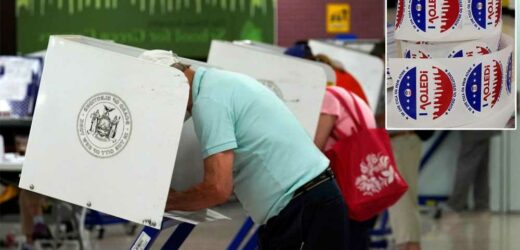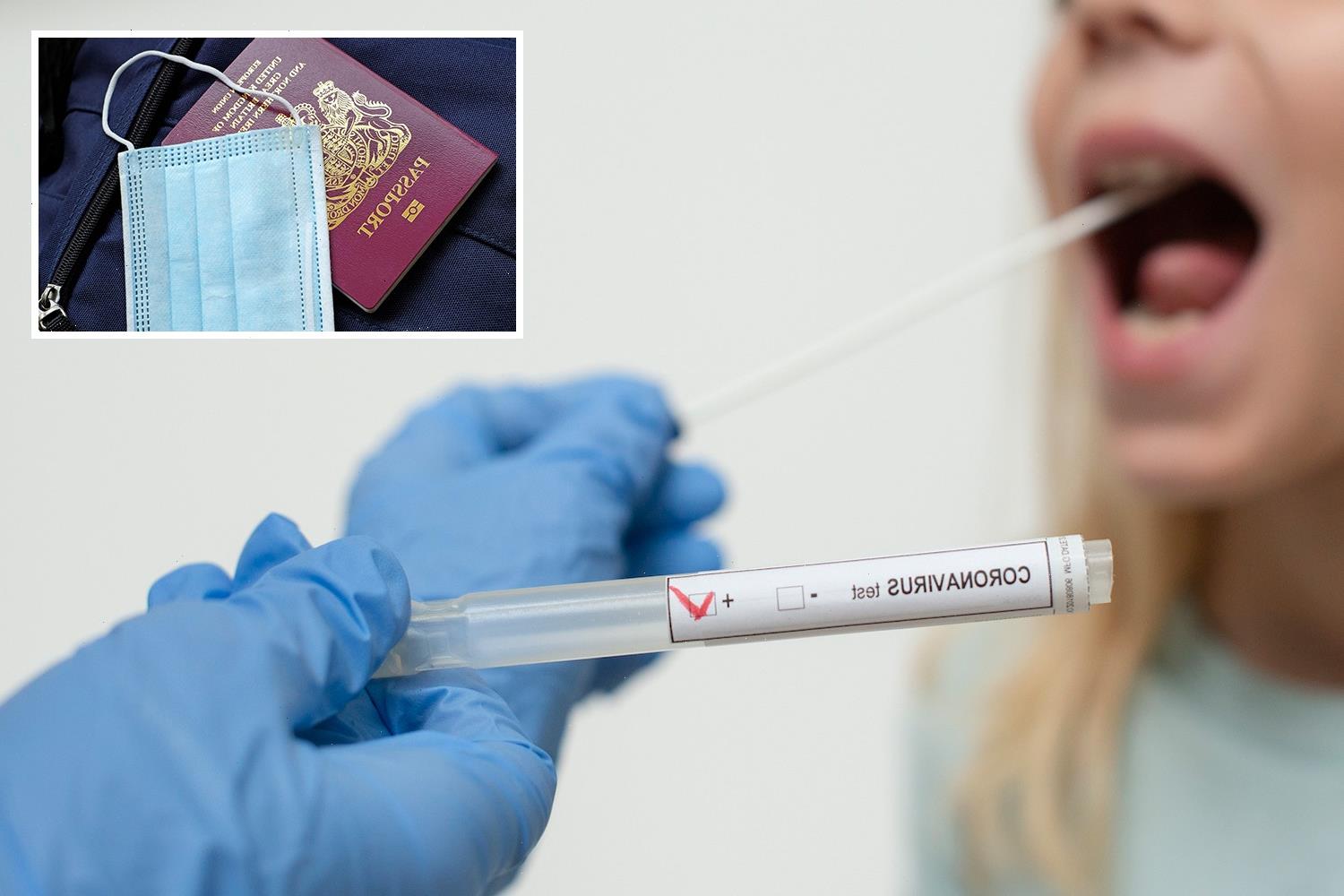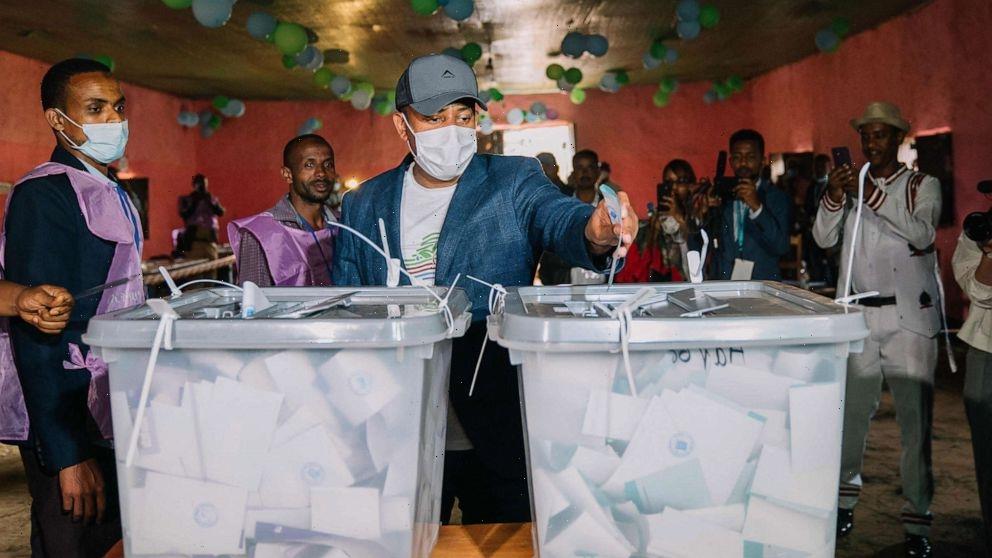More On:
NYC Mayoral Election 2021
NYC voters like ‘easy’ ranked-choice voting on rainy, low-turnout primary day
Delusional de Blasio somehow manages to reach new low on way out the door
Eric Adams gets emotional after voting in ‘historical’ primary
Adams leads, Wiley and Garcia battle for second in last-minute poll
It’s neck – and neck – and neck!
New Yorkers streamed to the voting booths on Tuesday to cast their ballots in the Big Apple’s hotly contested Democratic mayoral primary — and while it will be a couple of weeks before a winner can be declared, early results showed a three-way race.
The first round of the Democratic mayoral primary had Eric Adams (69,000 votes), Kathryn Garcia (54,593 votes) and Maya Wiley (48,822 votes) — with just six percentage points separating all three of the candidates, early returns from the Board of Elections show.
Adams, the Brooklyn borough president, had 29 percent of the 183,000 ballots cast predominately during early voting, which were reported shortly after the polls closed across the city at 9 p.m.
He was closely followed by Garcia, the former Sanitation Commissioner, who netted 23 percent of the vote.
Wiley, a former top aide to Mayor Bill de Blasio favored by progressive voters, scored 20 percent of the early votes. And Andrew Yang was a more distant fourth at just under 12 percent.
The early vote will account for just a fraction of the ballots cast during the election.
Notably, the totals quickly posted by the BOE does not include ballots cast on Election Day, which will be reported later tonight.
The totals also do not include any of the absentee ballots cast in this election, which legally cannot be removed from their envelopes until next week.
BOE officials have warned it will likely take several weeks to sort out the final victor.
Though polls closed at 9 p.m., it may take until July for a winner to be crowned, due to the launch of the ranked-choice voting system and the mounds of absentee ballots yet to be counted.
The Board of Elections have repeatedly warned that it could take weeks to sort out a victor. That’s because absentee ballots postmarked by Primary Day have until June 29 to work their way through the mail to get to the BOE offices. Once the absentee envelopes are opened and the ballots are scanned, the rank choice calculations must be rerun to incorporate all those votes.
Whoever wins the ranked-choice vote will be the heavy favorite in November’s general election to succeed Mayor Bill de Blasio thanks to the 8-1 registration advantage Democrats enjoy in New York City.
That means New York is on the verge of history in any likely scenario —set to elect its first-ever woman, first-ever Asian American or second-ever African American to the mayoralty.
The elongated vote-counting process promises to offer an anticlimactic finish to this extraordinary and expensive race, which turned bitter and personal in its closing days.
Yang slammed Adams over his real estate dealings and previous ethics probes, while Adams labeled Yang “a fraud” and his surrogates suggested Yang’s decision to campaign with Garcia amounted to racially-motivated voter suppression.
All told, the campaigns and independent groups backing candidates combined to spend at least $96 million in the race, according to a Post analysis of spending reports filed with the city’s Campaign Finance Board.
It was a race full of twists — even before some candidates officially launched their campaigns.
One expected front runner, Council Speaker Corey Johnson, dropped out before even formally getting in after disclosing he was suffering from a nasty bout of depression. (He later opted to run for city Comptroller).
Another top contender, city Comptroller Scott Stringer, saw his life-long mayoral ambitions collapse after two women stepped forward with separate allegations of sexual misconduct, including groping.
Worries about dramatic increases in gun violence allowed Adams to consolidate the black vote in the outerboroughs — a must-win block for any citywide campaign — even as he struggled to land endorsements from key community leaders like Rep. Hakeem Jeffries and Rep. Gregory Meeks.
Meanwhile, Garcia — a respected bureaucrat but political novice — rocketed into contention after landing the coveted endorsement of The New York Times, which polling shows she parlayed into capturing a large chunk of Stringer’s political base.
In nearly every conceivable way, the candidates and campaigns this cycle were a direct reaction to the staggering set of crises endured by the Big Apple over the last-and-a-half.
The devastating COVID-19 pandemic killed 33,378 city residents and pushed hospitals to the very edge of collapse; an economic shutdown pushed unemployment past 20 percent; the murder of George Floyd ignited weeks of protests demanding new police reforms; the opportunistic looting hit businesses both rich (Manhattan) and poor (The Bronx); a weeks-long barrage of illegal fireworks shattered nerves already frayed by the pandemic’s endless wale of ambulance sirens; a vicious spate of hate crimes left many Asian Americans fearful; and murders surged as shootings doubled.
All of these cataclysms were thrust into the hands of de Blasio, a man once so disinterested in the mayoralty that he ran for president only to see his campaign end months before any votes were cast.
Virtually all eight of the major candidates in the race sought to define themselves against Hizzoner and his handling of the self-described “perfect storm.”
Adams offered his resume as an ex-NYPD officer and reformer to voters as proof he could push the Police Department to make new reforms while maintaining the respect of rank-and-file cops.
Yang promised to provide an anecdote to de Blasio’s often scolding assessments of the Big Apple by championing the city — and took to campaigning in person during the COVID pandemic’s wintertime surge.
Wiley announced her campaign in the aftermath of the police reform protests, demanded the resignation of Police Commissioner Dermot Shea for his much-criticized handling of the protests and embracing the call from lefty activists to slash $1 billion be cut from the NYPD’s for social programs.
Garcia focused on her knowledge of the bureaucracy and her status as the de Blasio administration’s ‘Mr. Fix-It’, offering her experience as the city’s pandemic food ‘czar’ as a stark contrast to City Hall’s usual struggles to implement the mayor’s promises.
Share this article:
Source: Read Full Article






